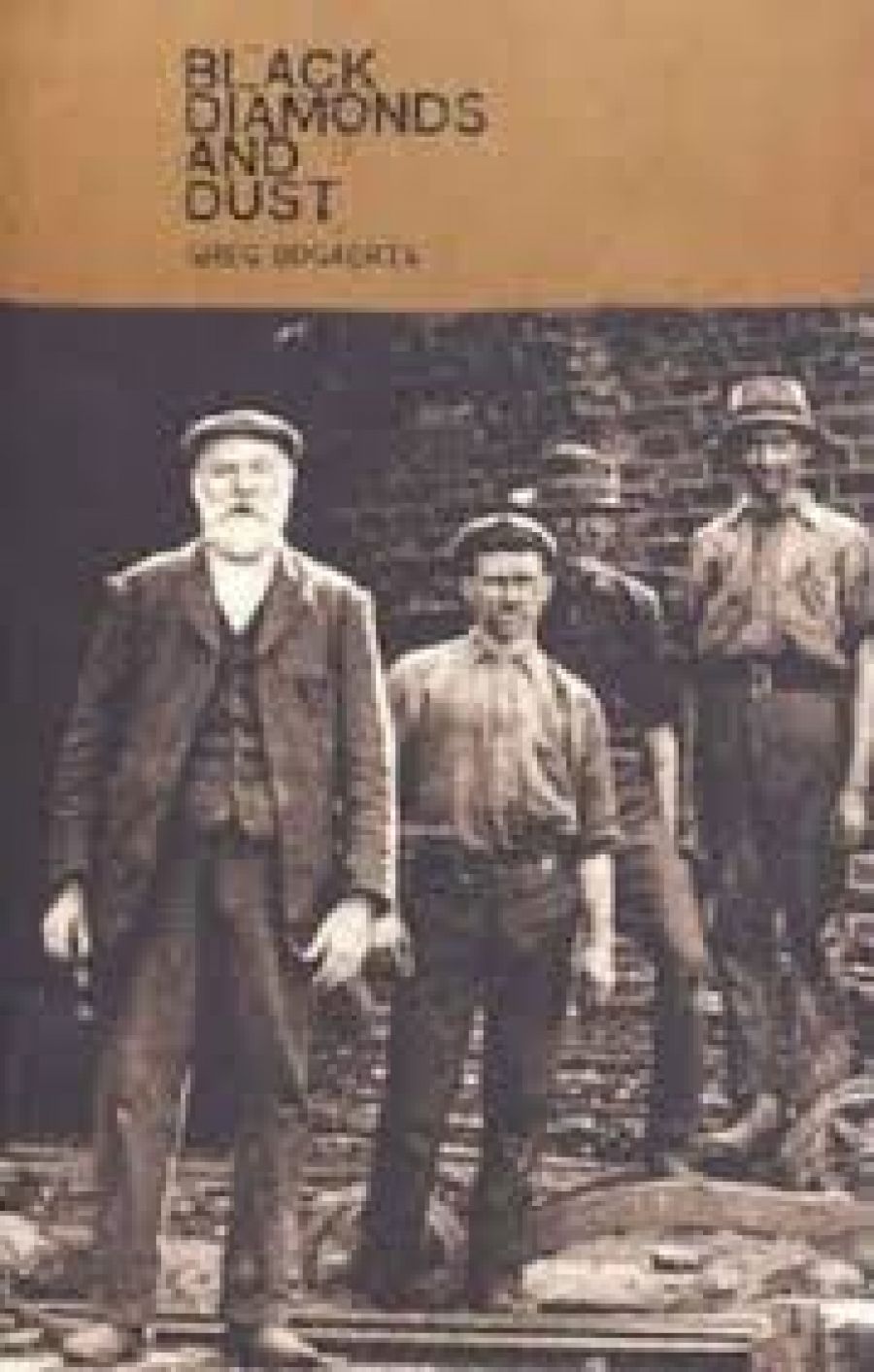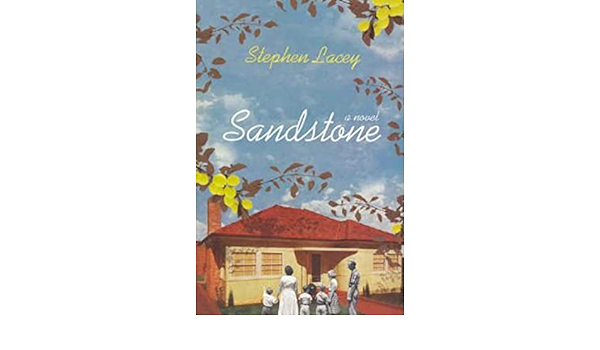
- Free Article: No
- Contents Category: Fiction
- Review Article: Yes
- Article Title: Building on sand and stone
- Online Only: No
- Custom Highlight Text:
Working-class settlements north of Sydney are the common setting for these two family sagas. Between them, they take us from the 1880s to 1951. Jack Wallis, who labours in a quarry in the sandstone country that gives Stephen Lacey’s book its title, is born in the early twentieth century; Edmund Shearer, a Newcastle miner of the coal or black diamonds of Greg Bogaerts’s title, nears his death by that time. Both novels might have been designed to answer recent calls for Australian writers to turn their attention to the lives of ordinary people. How many other recent novels explain to working-class readers how their own parents and grandparents, not those of the social élite, thought and acted? Where else, for instance, could today’s renovators read about how their progenitors built their own homes?
- Book 1 Title: Black Diamonds and Dust
- Book 1 Biblio: Vulgar Press, $25 pb, 262 pp, 095807951X
- Book 1 Cover Small (400 x 600):

- Book 1 Cover (800 x 1200):

- Book 2 Title: Sandstone
- Book 2 Biblio: Hodder, $32.95 pb, 340 pp, 0733618162
- Book 2 Cover Small (400 x 600):

- Book 2 Cover (800 x 1200):

To some extent, both Sandstone and Black Diamonds fit Drusilla Modjeska’s characterisation of recent Australian novels as bathing in the protective glow of history. Neither, however, fits Ken Gelder’s description of other recent novels as claustrophobic and introspective. Both Lacey and Bogaerts make some effort to present their particular chunk of the past as a prelude to contemporary situations, and both try to present a vision of a community that does not build its solidarity on the scapegoating of outsiders. But while they write about ordinary people, neither deals with the contemporary, urban people that Christos Tsiolkas (and very few others) is willing to write about. The bush legend still haunts these novels, modified to include praise for those bush workers with a ‘spiritual’ feeling for nature. This reads like an attempt to sidestep rather than confront the role played by early settlers in displacing the Aborigines, who had a real claim to such feelings for the land.
Black Diamonds is written with working-class readers in mind, specifically those in the Newcastle region, who expect to see this or that piece of family, local or cultural history properly related. Not only is the book published by the independent press, Vulgar, but its channels of distribution, publicity and discussion are through the labour-movement media and other local networks. To serve this readership, Bogaerts has his characters behave in ways that typify the feelings of the people of this region and experience events of historic importance to them.
Edmund Shearer, like Newcastle mining itself, is born into the convict system. As an infant, he is chained in the mines with his convict father. As a man, he works in the murderous conditions of, and is payed at rates set as inducements for, convicts. He responds with the resignation of a slave. As the mining community unionises, Edmund is confronted, at first with fear and disbelief, with an opportunity to escape from the role of an untouchable. He eventually finds his place in this new world and re-joins a family that had to press ahead without him in pursuit of their own opportunities. But while Edmund goes mad in the bush after his sensitive and artistic son dies in an horrific mine collapse, his wife, Mary, and brother, Clarence, choose to live together in social ostracism rather than see her children starve. Their isolation seems like a positive version of Edmund’s cringing in the bush, especially considering that Clarence, like a character by Patrick White, has been spiritually clarified by his dreadful suffering. But, like Edmund, they find that a full life can only be lived within a community.
Mary’s youngest child, Grace, is a born teacher who embodies the ideals of first-wave feminism and will not settle for less than love in marriage and rationality in society. The novel ends with Grace watching a harbour with industry sprouting on its shores and ships leaving with troops or arriving with immigrants. As she observes, she ‘waits’, but for what: the continued growth of a nation or the continuation of class war within it?
Sandstone is a novel that welcomes a similar working-class readership but uses the channels of mainstream publishing. As Japanese attacks reach Sydney Harbour, Jack Johnstone wants to enlist to attain the manhood exemplified for him by his only male role model, who fought in World War I. But his wife, Ruth, abandoned and abused by her first husband, and with her eldest son already enlisted, prevents him from doing so by a desperate act that is the novel’s central mystery. As a result, Jack Johnstone becomes Jack Wallis and they move to a semi-rural fishing town. The whole family believes that a better life will only emerge when they move from their shack into the dream home with sandstone foundations that Jack builds in his spare time. At the housewarming party at the story’s climax, Jack and Ruth realise that they have already built a ‘good enough’ life through the social relationships and personal convictions formed in the process of building the house. Jack announces to all, with the self-belief that marks his true attainment of manhood, that they are all part of ‘Jack and Ruth’s mob’, and he refuses to allow the community’s socially outcast members to be turned away.
Both Lacey and Bogaerts place their characters broadly within a national allegory in which the establishment of Australia is personified by a single family. But Australia was, for some, an extension of an empire and, for others, a radically new foundation. In a memorable image in Black Diamonds, the miners’ children, ‘the sons and daughters of Chartists’, sing Rule Britannia and raise the Union Jack at school assembly. The shakiness of the British social order in its new Australian setting seems to be shown in this vignette. The class system had first to be built, from bare ground, before it could consign to its lowest rungs the very people who built it. Yet build it they did and, in subsequent times, continued to do so, under compulsion, but also with complicity. The story of the Australian working class is wound up with that of the wider nation, but they are not the same story.
These novels raise the prospect of belonging inside a settled, viable community, but who is on the outside? To some extent, in both novels, ‘they’ are rich people. Bogaerts’s miners have a common enmity to the bosses, and Lacey’s villagers face the houses of the ‘silvertails’ across the water much as Cubans face the US. But both the Shearers and the Johnstones are besieged less by a hostile class than by their own gossiping neighbours. There is an ambiguous, perhaps confused, attitude to the ‘ordinary people’ that makes them a Jekyll and Hyde presence in these stories. The townspeople in both novels display nobility and solidarity in times of tragedy, but brutishness and cruelty when a feminist or liberal issue is raised.
The name Jack Johnstone calls to mind George Johnston’s My Brother Jack (1964), which poses a choice between belonging within an authentic, vernacular Australian culture or fleeing a small-minded Australian suburban desert. But the choice to flee is not always open to members of a labourer’s family, and perhaps a better reference for novels of working-class life is a socialist novel such as Dorothy Hewett’s Bobbin Up (1959), in which the choice is between building a conscious working-class culture or being tossed and blown in economic and social chaos. But these novels do not need to be the final word. They are steps in the path to a possible revival of Australian working-class literature.


Comments powered by CComment